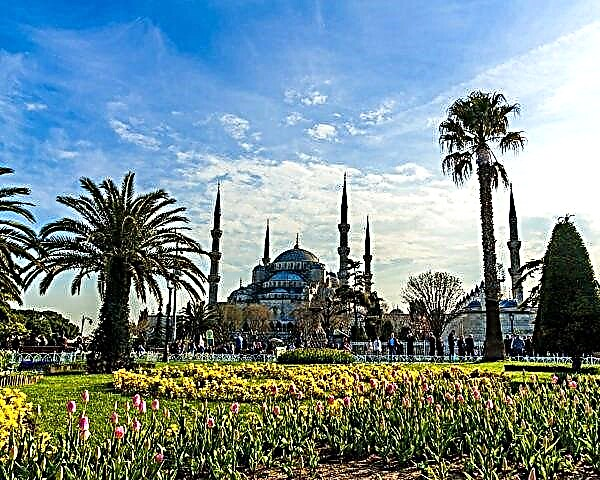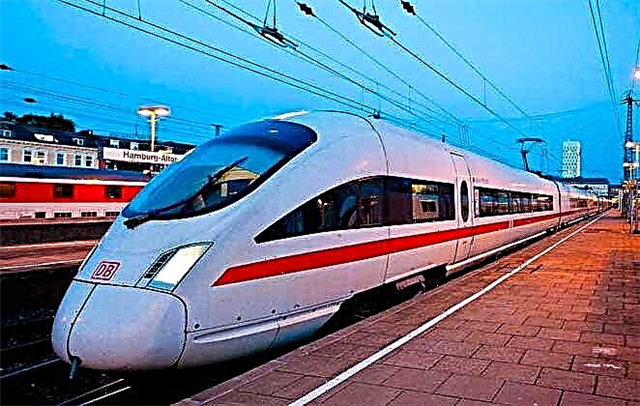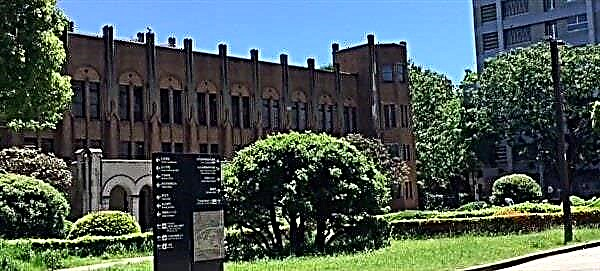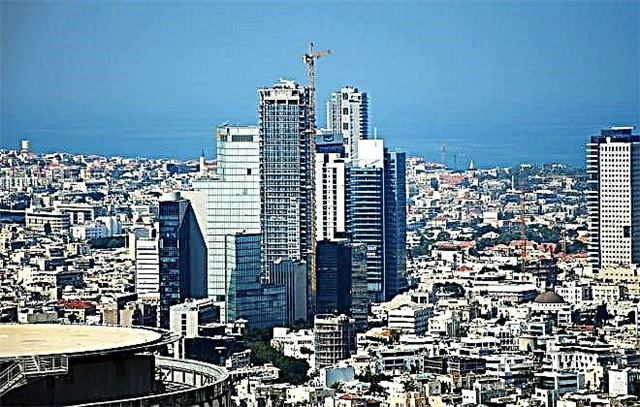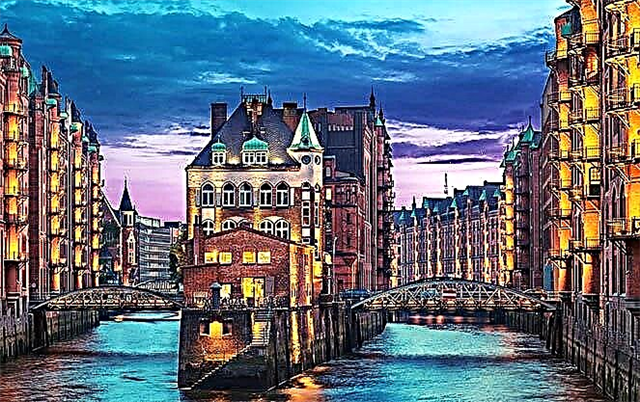The largest port, commercial and industrial center of Germany, Hamburg is often called a state within a state. The city has long been inhabited by visitors from other countries, the speech of different peoples sounded on its streets, it is not surprising that there has always been a very high demand for buildings for worship of various directions of Christianity and Islam. Today, temples, cathedrals and mosques in Hamburg attract the attention of not only believers, but also numerous tourists.

Why the city is attractive to tourists
Industrial Hamburg has its own unique appearance, it cannot be confused with other cities of Germany, so it attracts not only business people, but also tourists who will find many attractions here.
These are giant skyscrapers and well-preserved medieval architecture, the famous fish market and a botanical garden, stretching over 24 hectares. The Cap San Diego Maritime Museum on a cargo ship and the Cube Center for Contemporary Art attract the attention of visitors, while the Opera House, which has a history of almost three and a half centuries, will delight visitors.
There are always a lot of visitors to the museum of the city, built of ancient bricks a hundred years ago in the style of a church of the 18th – 19th centuries. Here you can see the remains of pirates and their household items, an operating model of the railway - the largest in Europe, a diorama of a medieval port.
Religious buildings of various confessions give the city a unique look.
Islamic Center in Hamburg
In the 50s of the last century, a mosque of Imam Ali was built one and a half kilometers from the embankment of Lake Alster. It was built with money from Iranian Shiite emigrants. Initially, it was a small business center, a meeting place for Muslims living in the city, and today it has turned into an Islamic center - one of the largest in Europe.
Opponents of Shah Reza Pahlavi, participants in the 1979 Islamic revolution, often gathered here, and one of the leaders of the center later became the president of Iran.

A small building lined with blue tiles with two minarets stands out sharply against the background of European buildings. The interior can accommodate up to one and a half thousand people who come here not only for religious services, but also for cultural events. Men and women can only be in the center separately.
The address of the center is Schöne Aussicht, 36. Bus number 6 runs here, stop - Zimmerstraße.
Fazle Omar Mosque
The former suburb of Hamburg, Eimsbütel, is often called the workers' quarter - here in the second half of the 19th century, houses were built for the poor workers of local enterprises. Today, this area, located in the northern part of the city, boasts temples of different directions: a synagogue, the Orthodox Church of St. Procopius and the Fazle Omar Mosque operate here.
The mosque was opened in 1957 by the Pakistani statesman and religious leader Sir Zefarallah Khan, it was intended for supporters of the Ahmad movement in Islam - this is the second purpose-built Islamic religious building in Germany. The architect of the building is the Muslim Ahmadi, who was born in Germany. For several years, only here Muslims living in Hamburg and its environs could pray and communicate in their usual environment.
Currently, the mosque is open year-round and is used as an information center for school classes, government groups and other agencies. This modest one-story white building with two traditional minarets is located on Wieckstraße in the Stellingen quarter.
Church of st michael
The Protestant Church of St. Michael is affectionately called by the townspeople "Michel" or "Big Michel", it is located in the southern district of the New Town. It is the largest temple in Northern Germany. The Baroque landmark of Hamburg in the mid-17th century was erected by architects Peter Marquardt and Christoph Corbinus.
The Church of St. Michael burned out several times, but it was rebuilt again, and the bell tower 132 m high served as a reference point for sailors for a long time as a lighthouse. The largest tower clock in Germany is still beating time on the tower.
During the Second World War, the temple was badly damaged, the organ on which the son of I.-S. Bach. However, today the building again pleases with its exterior and interior decoration, gilded vaults, excellent acoustics, which makes the sounds of a new organ worth several million euros unforgettable.

There is an observation deck at an altitude of 100 m in the bell tower. You can climb it both on foot and by elevator. You can visit the cathedral and see it only after the service, since it is active. Coming closer to the building, every day from 10 to 21 o'clock you can hear the chant from the tower.
Address: Englische Planke 1.
Church of St. Matthew
Church of st. Matthew is a baroque brick church built in the early 20th century by local master builder Julius Folwasser in the Winterhude district, which stretches from Lake Alster to City-Nord. 600-700 years ago, ships were kept here in winter, hence the name - "winter berth".

Currently, the church belongs to the Lutheran community. Small green domes on the sides of the main entrance, a neat spire make the church cozy and attractive, despite its rather austere appearance and modest interior decoration. The main attraction of the building is considered to be the colorful windows and stained-glass windows by Charles Crodell, created in the 60s of the XX century.
Address: Gottschedstraße 17,
Church of St. Mary
The Marien-Dom (Church of St. Mary) is a cathedral belonging to the Roman Catholic Church, was finally built and consecrated in 1893 and since then has been the Catholic center of the city. The church is located in a northeast direction from the center, not far from the embankment.

The cathedral was created in the neo-Romanesque style by the architect Arnold Güldenpfennig. Externally, the temple looks like a Roman basilica in the shape of a cross with two towers, a round dome and many figures of saints on the facade. Inside the church is richly decorated with mosaics, frescoes, icons. The organ for this building was made half a century ago by Rudolf von Beckerath Orgelbau.
Address: Am Mariendom, 7. The nearest metro station to the cathedral is Lohmühlenstraße. Take the bus to the Gurlittstraße stop (Lange Raie street).
St. James Church
One of the main Lutheran churches in Hamburg is the Cathedral of St. James (St. James), which is located in the city center and is perfectly visible from afar thanks to the high bell tower reaching 125 m.
The temple was first mentioned in documents in the middle of the 13th century, but at that time it was just a chapel. Later it was completely rebuilt and turned into a huge red brick Gothic cathedral with lancet windows.
Particularly attractive for parishioners and tourists is the organ made by Arp Schnitger, which has been preserved since 1693 and has about 4 thousand pipes.

After the destruction and bombing of the Second World War, the church was almost completely rebuilt; today it operates as usual, and daily services are held in it. In the bell tower, at an altitude of about 80 m, there is a small cafe, open from May to mid-October.
Located near the Town Hall and St. Peter's Cathedral at Jakobikirchhof 22. Metro station - Mönckebergstraße.
Church of St. Catherine
This high brick church is located near the port, in the area of the former warehouses - Speicherstadt. It was the place where sailors went to pray after arriving in the city from a long voyage, which is why it is sometimes called the temple of the sailors.
The church of St. Catherine was founded in the XIII century, but four centuries later it was rebuilt, giving a more modern look.
The spiers of the temple, like the tower of the Church of St. Michael, served as a guide for sailors in the sea, since they were visible from afar.The bell tower with a clock up to 115 meters high is considered one of the most beautiful in the city in 2021. One of the bells, cast in the 17th century, has survived.
A beautiful view of the building opens from the opposite side of the canal, from the so-called granary city, especially in the evening, when it is illuminated.

Inside it is a typical Gothic church, where you can see tombstones and monuments from the 16th century, as well as a figure of St. Catherine brought from southern Germany.
It regularly hosts concerts of both church and secular music. The temple is open on weekdays from 10 to 17, on Saturday and Sunday from 11 to 17 hours. Address: Katharinenkirchhof, 1.
St. Peter's Church
In the old town, the attention of tourists is attracted by St. Peter's Cathedral - the main Catholic church in Hamburg. It is located in the very center, between the Town Hall Square and the shopping street leading to the train station. For the first time, this temple was mentioned in documents of the 12th century; it is considered the oldest religious building in Hamburg.
The austere ascetic building with a high spire fits perfectly into the ensemble of old houses in the center. Inside, the church burned out many times, was rebuilt, so nothing has survived in it since ancient times.

Having paid 3 euros and overcoming 544 steps, you can climb to the observation deck with a height of 123 m. On the way there are several intermediate platforms, chairs on which you can relax, closed windows for exploring the city. Upstairs is the main observation deck with a diameter of about 2 m.
The church is open daily from 9 am to 8 pm. Address: Bei der Petrikirche, 2, Innenstadt.
Church of St. Nicholas
The Church of St. Nicholas was founded in the XI century, then it was made of wood. After 300 years, a stone temple was built on this site, which burned down in 1842. In 1874, the English architect George Gilbert Scott created a new building in the neo-Gothic style, which at that time was the tallest in the world.
After the bombing of Hamburg in 1943, only the 143 m high bell tower remained from the Church of St. Nicholas. Today, the cathedral remains in ruins, which have been preserved as a memorial to the victims of the Second World War.
Not far from the ruins there is a pavilion with documents and photographs telling about the history of this Lutheran temple, which is closed as a religious building.

The basement currently hosts a wine museum. An elevator is installed in the bell tower itself, which takes visitors to the observation deck.
Opening hours: Monday to Sunday, 10 am to 6 pm. Address: Willy-Brandt-Straße, 60.
Church of St. John of Kronstadt
The largest Orthodox church in Germany is located in Hamburg. The beautiful building has an interesting history. At the end of the 19th century, in the northern part of the St. Pauli district, according to the project of the architect Fernando Lorenzo, the construction of the Church of the Grace of God began. The building is 53 meters high and is made in the form of a lying cross.
Badly damaged during the war, the building began to decline, so in 2004 the Evangelical Church decided to transfer it to the Orthodox community. This is how the Church of St. John of Kronstadt appeared in the city.

Over the past fifteen years since then, an Orthodox iconostasis has been created using the technique of raw frescoes, and a marble mosaic floor has been laid. Among the images of saints, the central place is occupied by those who are associated with Germany: St. Procopius, a merchant from Lübeck who converted to Orthodoxy in Novgorod, St. Ansgar, the first bishop of Hamburg, St. Elizabeth Romanova, who is buried in Wiesbaden.
The church is open to the public every day from 10.00 to 15.00, on Wednesdays and Saturdays - from 10.00 to 19.00.
Address: Tschaikovskiplatz, 1.
Conclusion
Every day thousands of tourists and pilgrims visit the temples, cathedrals and mosques of Hamburg, who touch the spiritual life of the city, attend religious services, enjoy choral and organ music, admire the city from observation platforms. These religious buildings have long ceased to be just buildings for the administration of religious services and have become an integral part of the modern look of Hamburg, attracting visitors from all over the world.

